Identification and Venom Characterization of Two Scorpions from the State of Chihuahua Mexico: Chihuahuanus coahuliae and Chihuahuanus crassimannus
Abstract
1. Introduction
2. Results
2.1. Scorpion Collection Site
2.2. Classification Molecular and Taxonomic
2.3. Mice and Cricket Biological Activity
2.4. Antimicrobial Activity
3. Discussion
4. Conclusions
5. Material and Methods
5.1. Scorpion’s Collection and Maintenance
5.2. DNA Extraction, Amplification, and Sequencing
5.3. Morphological Characteristics Analysis
5.4. Venom Extraction
5.5. Fractionation of Scorpion Venoms
5.6. Mass Spectrometry and N-Terminal Sequencing
5.7. Biological Activities in Mice and Crickets
5.7.1. Mice
5.7.2. Insects
5.8. Antimicrobial Activity
Supplementary Materials
Author Contributions
Funding
Institutional Review Board Statement
Informed Consent Statement
Data Availability Statement
Acknowledgments
Conflicts of Interest
References
- Dunlop, J.A.; Selden, P.A. Scorpion Fragments from the Silurian of Powys, Wales. Arachnology 2013, 16, 27–32. [Google Scholar] [CrossRef]
- Williams, S.C. Scorpions from Northern Mexico; Five New Species of Vejovis from Coahuila, Mexico. Occas. Pap. Calif. Acad. Sci. 1968, 68, 1–24. [Google Scholar]
- Zhang, Z.Q. Animal Biodiversity: An Outline of Higher-Level Classification and Survey of Taxonomic Richness (Addenda 2013). Zootaxa 2013, 3703, 1–82. [Google Scholar] [CrossRef] [PubMed]
- Chippaux, J.P.; Goyffon, M. Epidemiology of Scorpionism: A Global Appraisal. Acta Trop. 2008, 107, 71–79. [Google Scholar] [CrossRef] [PubMed]
- Riaño-Umbarila, L.; Rodríguez-Rodríguez, E.R.; Santibañez-López, C.E.; Güereca, L.; Uribe-Romero, S.J.; Gómez-Ramírez, I.V.; Cárcamo-Noriega, E.N.; Possani, L.D.; Becerril, B. Updating Knowledge on New Medically Important Scorpion Species in Mexico. Toxicon 2017, 138, 130–137. [Google Scholar] [CrossRef]
- Santibáñez-López, C.E.; Possani, L.D. Overview of the Knottin Scorpion Toxin-like Peptides in Scorpion Venoms: Insights on Their Classification and Evolution. Toxicon 2015, 107, 317–326. [Google Scholar] [CrossRef]
- Froy, O.; Sagiv, T.; Poreh, M.; Urbach, D.; Zilberberg, N.; Gurevitz, M. Dynamic Diversification from a Putative Common Ancestor of Scorpion Toxins Affecting Sodium, Potassium, and Chloride Channels. J. Mol. Evol. 1999, 48, 187–196. [Google Scholar] [CrossRef]
- Possani, L.D.; Becerril, B.; Delepierre, M.; Tytgat, J. Scorpion Toxins Specific for Na+-Channels. Eur. J. Biochem. 1999, 264, 287–300. [Google Scholar] [CrossRef]
- Cao, Z.; Yu, Y.; Wu, Y.; Hao, P.; Di, Z.; He, Y.; Chen, Z.; Yang, W.; Shen, Z.; He, X.; et al. The Genome of Mesobuthus Martensii Reveals a Unique Adaptation Model of Arthropods. Nat. Commun. 2013, 4, 2602. [Google Scholar] [CrossRef]
- Santibáñez-López, C.E.; Aharon, S.; Ballesteros, J.A.; Gainett, G.; Baker, C.M.; González-Santillán, E.; Harvey, M.S.; Hassan, M.K.; Abu Almaaty, A.H.; Aldeyarbi, S.M.; et al. Phylogenomics of Scorpions Reveal Contemporaneous Diversification of Scorpion Mammalian Predators and Mammal-Active Sodium Channel Toxins. Syst. Biol. 2022, 71, 1281–1289. [Google Scholar] [CrossRef]
- Casewell, N.R.; Wüster, W.; Vonk, F.J.; Harrison, R.A.; Fry, B.G. Complex Cocktails: The Evolutionary Novelty of Venoms. Trends Ecol. Evol. 2013, 28, 219–229. [Google Scholar] [CrossRef] [PubMed]
- King, G.F.; Hardy, M.C. Spider-Venom Peptides: Structure, Pharmacology, and Potential for Control of Insect Pests. Annu. Rev. Entomol. 2013, 58, 475–496. [Google Scholar] [CrossRef] [PubMed]
- Das Gupta, S.; Halder, B.; Gomes, A.; Gomes, A. Bengalin Initiates Autophagic Cell Death through ERK-MAPK Pathway Following Suppression of Apoptosis in Human Leukemic U937 Cells. Life Sci. 2013, 93, 271–276. [Google Scholar] [CrossRef]
- Díaz-García, A.; Morier-Díaz, L.; Frión-Herrera, Y.; Rodríguez-Sánchez, H.; Caballero-Lorenzo, Y.; Mendoza-Llanes, D.; Riquenes-Garlobo, Y.; Fraga-Castro, J.A. In Vitro Anticancer Effect of Venom from Cuban Scorpion Rhopalurus Junceus against a Panel of Human Cancer Cell Lines. J. Venom Res. 2013, 4, 5–12. [Google Scholar] [PubMed]
- Ortiz, E.; Gurrola, G.B.; Schwartz, E.F.; Possani, L.D. Scorpion Venom Components as Potential Candidates for Drug Development. Toxicon 2015, 93, 125–135. [Google Scholar] [CrossRef]
- Wulff, H.; Castle, N.A.; Pardo, L.A. Voltage-Gated Potassium Channels as Therapeutic Targets. Nat. Rev. Drug Discov. 2009, 8, 982–1001. [Google Scholar] [CrossRef]
- Borges, A.; Bermingham, E.; Herrera, N.; Alfonzo, M.J.; Sanjur, O.I. Molecular Systematics of the Neotropical Scorpion Genus Tityus (Buthidae): The Historical Biogeography and Venom Antigenic Diversity of Toxic Venezuelan Species. Toxicon 2010, 55, 436–454. [Google Scholar] [CrossRef]
- Soltan-Alinejad, P.; Rafinejad, J.; Dabiri, F.; Onorati, P.; Terenius, O.; Chavshin, A.R. Molecular Analysis of the Mitochondrial Markers COI, 12S RDNA and 16S RDNA for Six Species of Iranian Scorpions. BMC Res. Notes 2021, 14, 1–6. [Google Scholar] [CrossRef] [PubMed]
- González-Santillán, E.; Prendini, L. Redefinition and Generic Revision of the North American Vaejovid Scorpion Subfamily Syntropinae Kraepelin, 1905, with Descriptions of Six New Genera. Bull. Am. Mus. Nat. Hist. 2013, 382, 1–71. [Google Scholar] [CrossRef]
- Carcamo-Noriega, E.N.; Possani, L.D.; Ortiz, E. Venom Content and Toxicity Regeneration after Venom Gland Depletion by Electrostimulation in the Scorpion Centruroides Limpidus. Toxicon 2019, 157, 87–92. [Google Scholar] [CrossRef]
- Torres-Larios, A.; Gurrola, G.B.; Zamudio, F.Z.; Possani, L.D. Hadrurin, a New Antimicrobial Peptide from the Venom of the Scorpion Hadrurus Aztecus. Eur. J. Biochem. 2000, 267, 5023–5031. [Google Scholar] [CrossRef]
- García-Gómez, B.I.; Coronas, F.I.V.; Restano-Cassulini, R.; Rodríguez, R.R.; Possani, L.D. Biochemical and Molecular Characterization of the Venom from the Cuban Scorpion Rhopalurus Junceus. Toxicon 2011, 58, 18–27. [Google Scholar] [CrossRef] [PubMed]
- Hernández-Salgado, K.; Estrada, G.; Olvera, A.; Coronas, F.I.; Possani, L.D.; Corzo, G. Heterologous Expressed Toxic and Non-Toxic Peptide Variants of Toxin CssII Are Capable to Produce Neutralizing Antibodies against the Venom of the Scorpion Centruroides Suffusus Suffusus. Immunol. Lett. 2009, 125, 93–99. [Google Scholar] [CrossRef] [PubMed]
- Ahmadi, S.; Knerr, J.M.; Argemi, L.; Bordon, K.C.F.; Pucca, M.B.; Cerni, F.A.; Arantes, E.C.; Çalışkan, F.; Laustsen, A.H. Scorpion Venom: Detriments and Benefits. Biomedicines 2020, 8, 118. [Google Scholar] [CrossRef] [PubMed]
- Santibáñez-López, C.E.; González-Santillán, E.; Monod, L.; Sharma, P.P. Phylogenomics Facilitates Stable Scorpion Systematics: Reassessing the Relationships of Vaejovidae and a New Higher-Level Classification of Scorpiones (Arachnida). Mol. Phylogenet. Evol. 2019, 135, 22–30. [Google Scholar] [CrossRef]
- Quintero-Hernández, V.; Jiménez-Vargas, J.M.; Gurrola, G.B.; Valdivia, H.H.; Possani, L.D. Scorpion Venom Components That Affect Ion-Channels Function. Toxicon 2013, 76, 328–342. [Google Scholar] [CrossRef] [PubMed]
- Díaz-García, A.; Varela, D. Voltage-Gated K+/Na+ Channels and Scorpion Venom Toxins in Cancer. Front. Pharmacol. 2019, 11, 913. [Google Scholar] [CrossRef]
- Bergeron, Z.; Bingham, J.-P. Scorpion Toxins Specific for Potassium (K+) Channels: A Historical Overview of Peptide Bioengineering. Toxins 2012, 4, 1082–1119. [Google Scholar] [CrossRef]
- Schwartz, E.F.; Michelle Capes, E.; Diego-García, E.; Zamudio, F.Z.; Fuentes, O.; Possani, L.D.; Valdivia, H.H. Characterization of Hadrucalcin, a Peptide from Hadrurus Gertschi Scorpion Venom with Pharmacological Activity on Ryanodine Receptors. Br. J. Pharmacol. 2009, 157, 392–403. [Google Scholar] [CrossRef]
- Verkman, A.S.; Galietta, L.J.V. Chloride Channels as Drug Targets. Nat. Rev. Drug Discov. 2009, 8, 153–171. [Google Scholar] [CrossRef]
- Zhu, S.; Huys, I.; Dyason, K.; Verdonck, F.; Tytgat, J. Evolutionary Trace Analysis of Scorpion Toxins Specific for K-Channels. Proteins 2004, 54, 361–370. [Google Scholar] [CrossRef] [PubMed]
- Zhu, S.; Peigneur, S.; Gao, B.; Luo, L.; Jin, D.; Zhao, Y.; Tytgat, J. Molecular Diversity and Functional Evolution of Scorpion Potassium Channel Toxins. Mol. Cell. Proteom. 2011, 10, M110.002832. [Google Scholar] [CrossRef] [PubMed]
- Rodríguez De La Vega, R.C.; Possani, L.D. Current Views on Scorpion Toxins Specific for K+-Channels. Toxicon 2004, 43, 865–875. [Google Scholar] [CrossRef] [PubMed]
- Wargent, E.T. Practical Considerations for In Vivo Mouse Studies. Methods Mol. Biol. 2020, 2076, 31–42. [Google Scholar] [CrossRef] [PubMed]
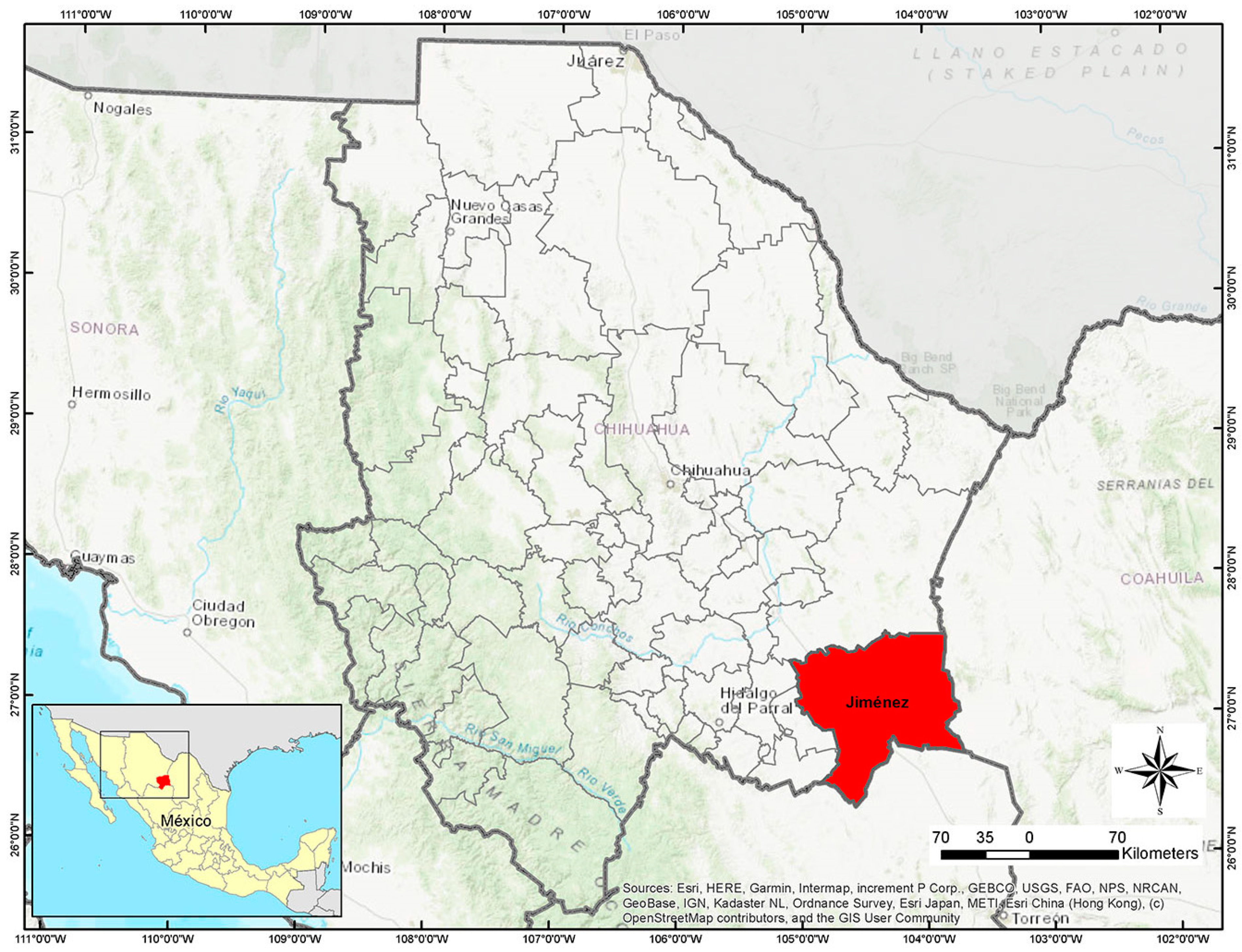
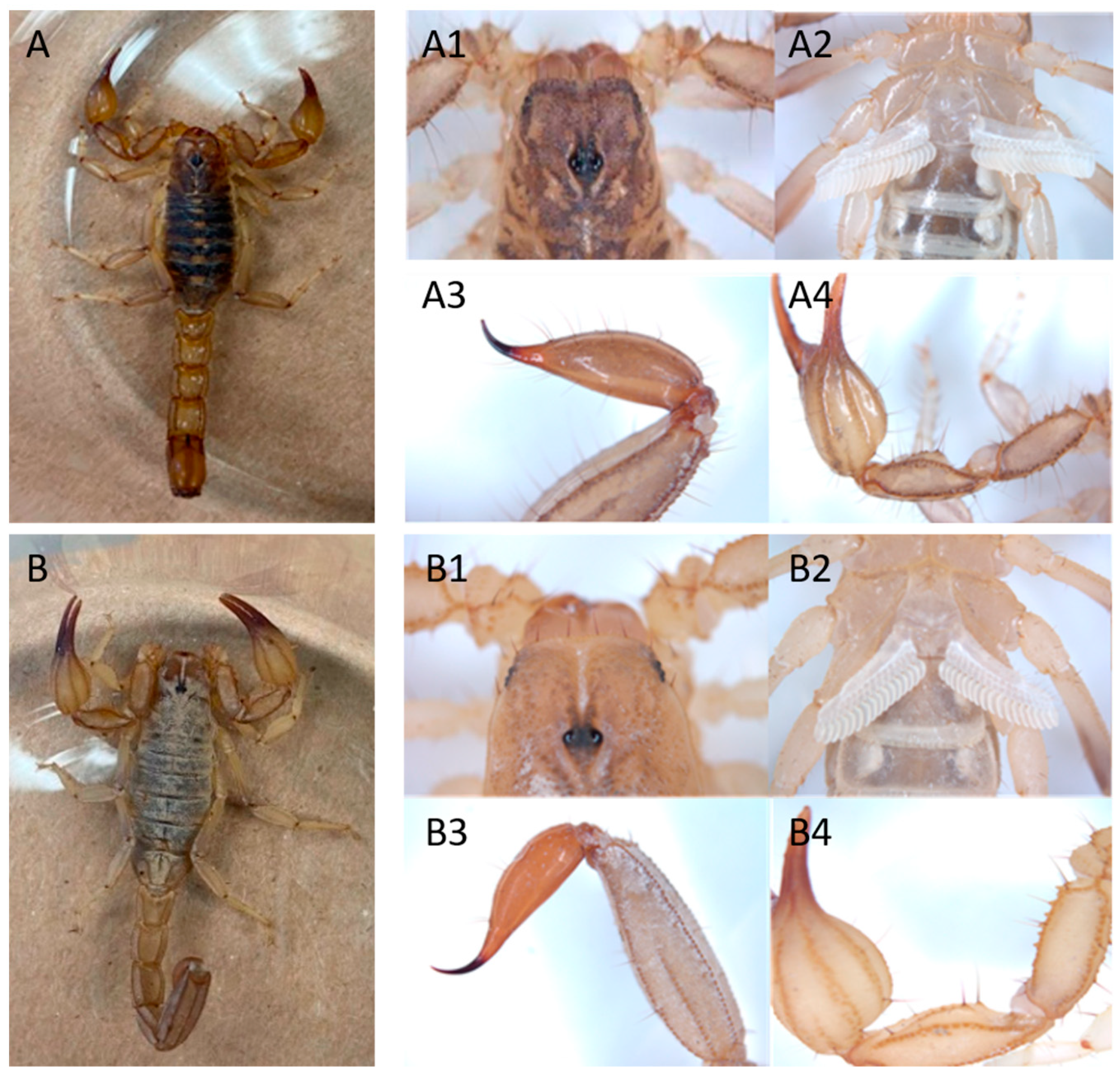
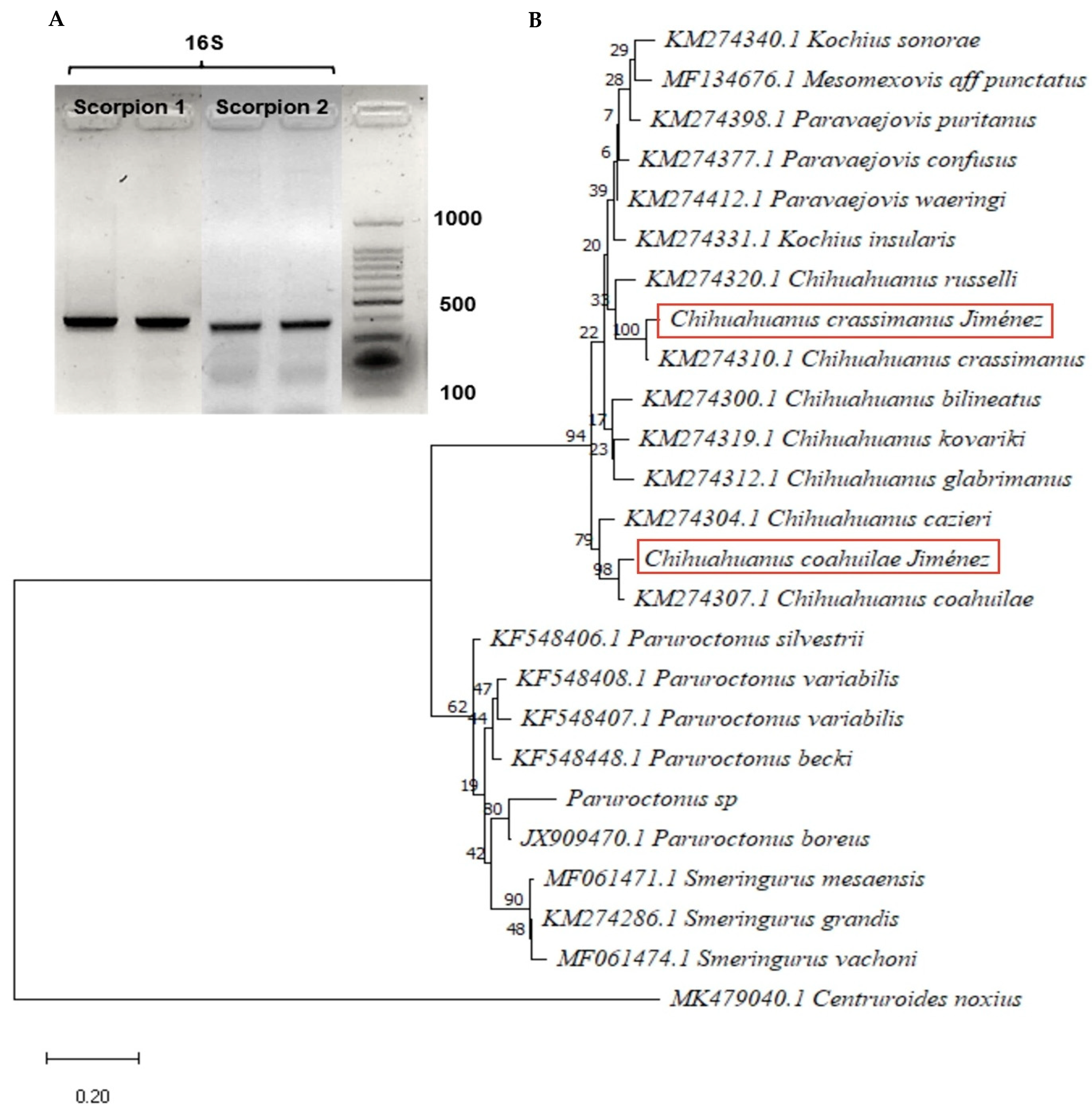
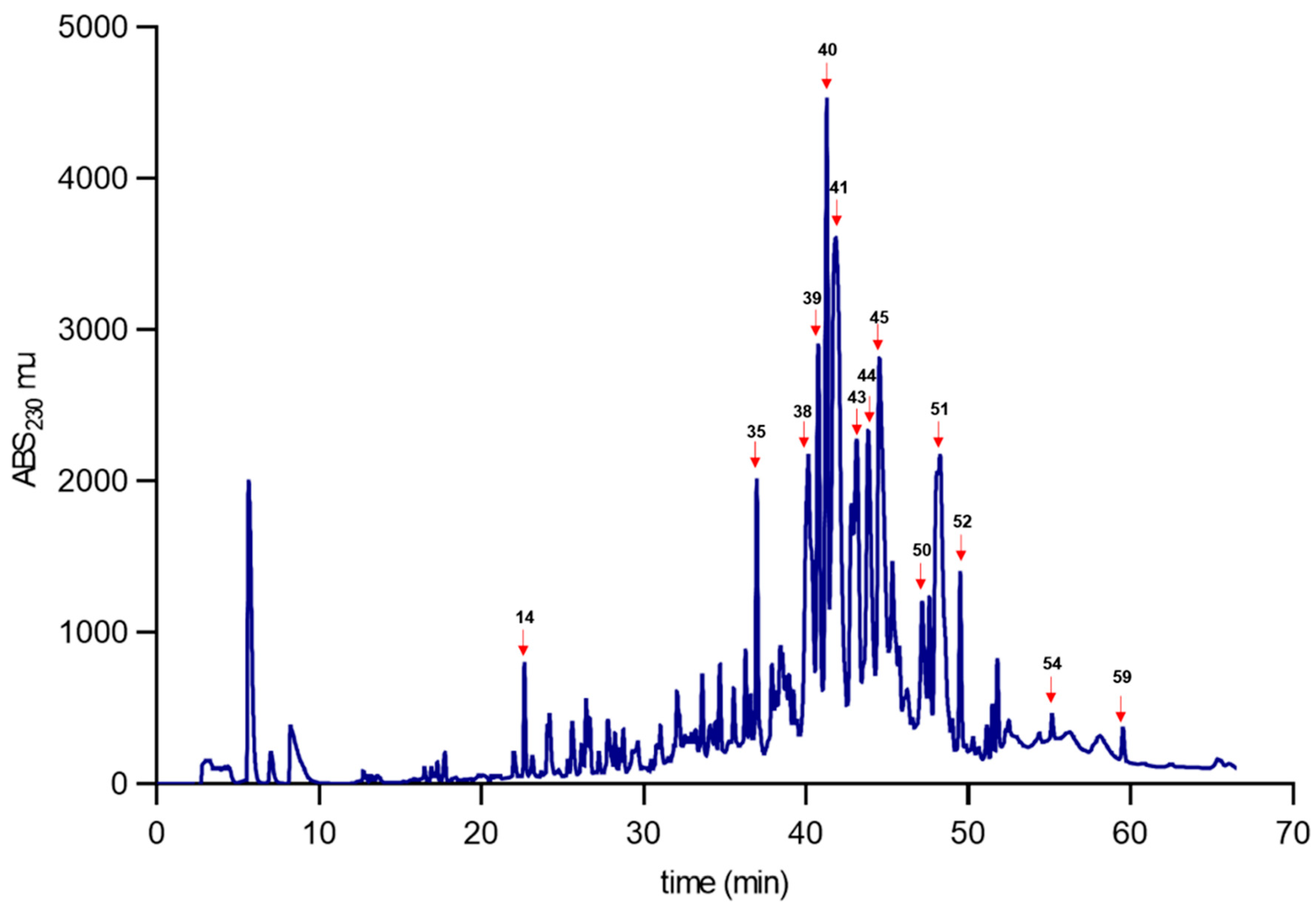
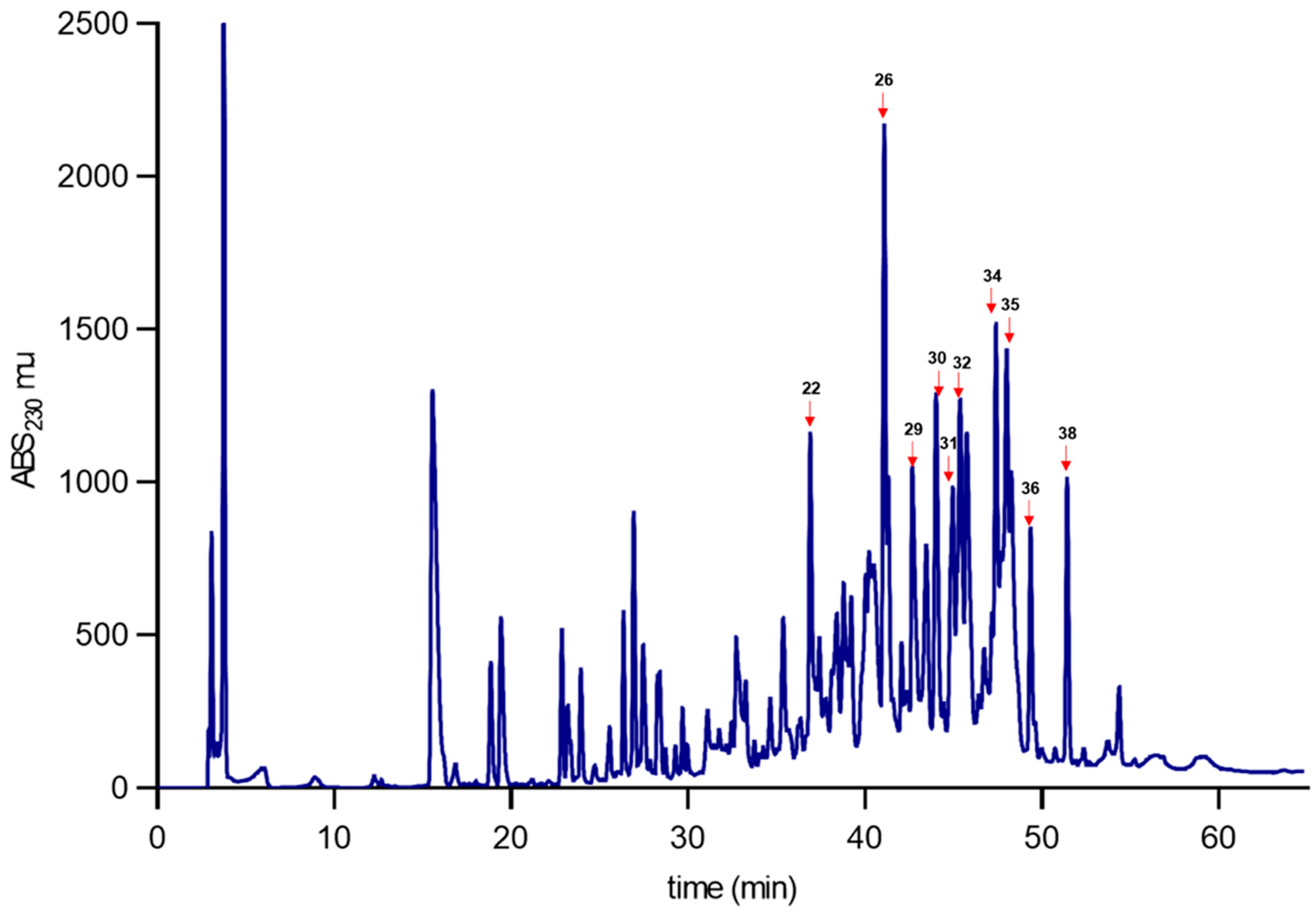
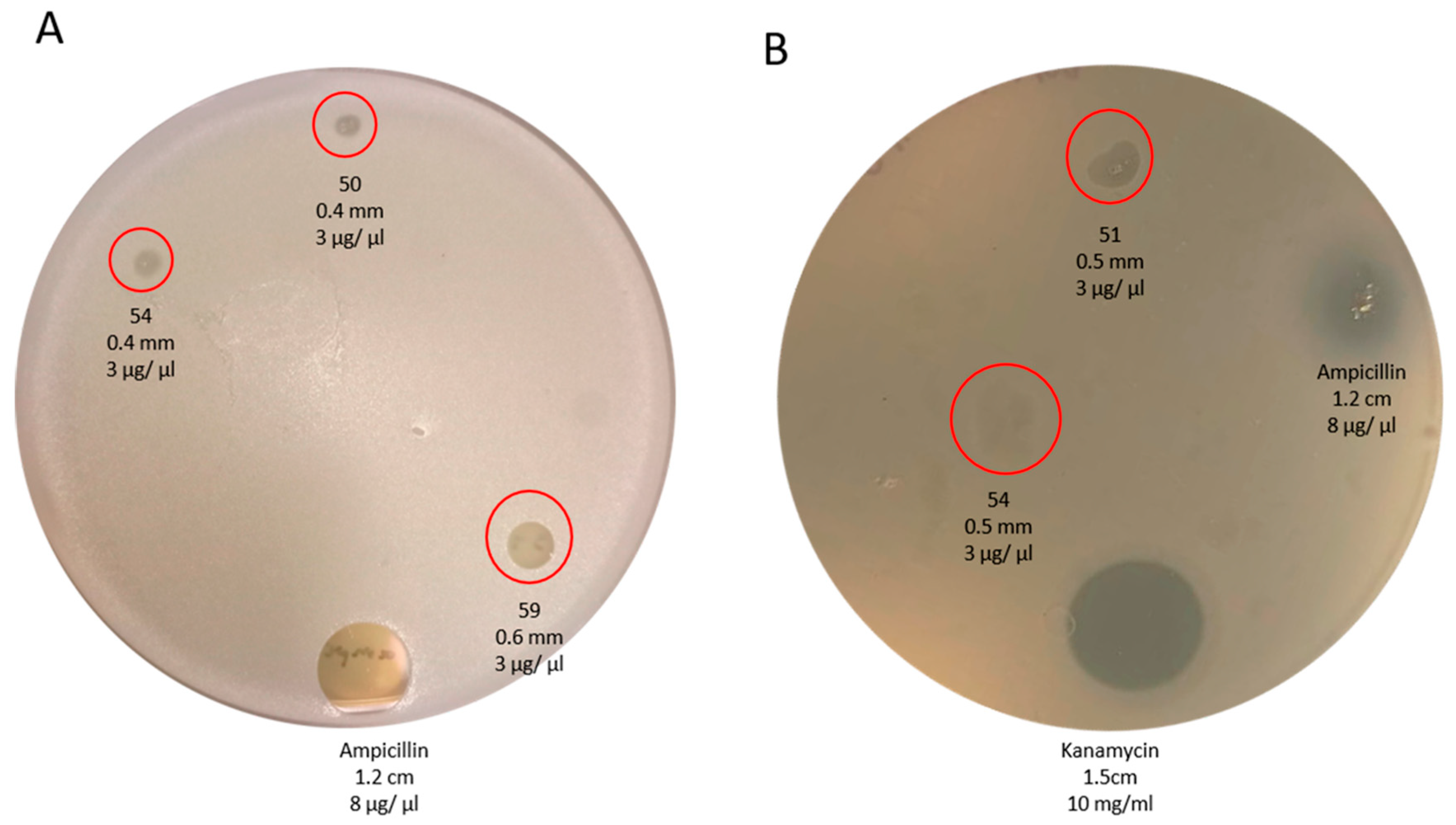
| Fraction | Retention Time (min) | Molecular Mass (Da) | Mouse (2 µg) | Cricket (10 µg) |
|---|---|---|---|---|
| 14 | 22.6 | 3540.8 | Dead | - |
| 35 | 36 | 2977.0 3066.1 | - | - |
| 38 | 39.9 | 7960.3 | - | - |
| 39 | 40.7 | 8302.3 | Dead | - |
| 40 | 41.2 | 3302.7 | - | - |
| 41 | 41.6 | 6559.7 | - | - |
| 43 | 43.1 | 6559.1 6736.1 | Dead | Dead |
| 44 | 43.6 | 6643.7 6616.4 | - | Paralyzed |
| 45 | 44.4 | 2103.9 | - | Dead |
| 50 | 47.7 | 5212.5 4822.6 4980.7 1888.5 | - | - |
| 51 | 49.1 | 2157.3 845.1 1377.1 | - | Dead |
| 52 | 49.9 | 1349 | - | - |
| 54 | 52.2 | 1364.1 | - | - |
| 59 | 59.5 | 1536.4 | - | - |
| Fraction | Retention Time (min) | Molecular Mass (Da) | Mouse (2 µg) | Cricket (10 µg) |
|---|---|---|---|---|
| 22 | 37.5 | 3066.7 | - | - |
| 26 | 41.3 | 8302.6 | - | - |
| 29 | 43.7 | 6709.4 6747.2 | Dead | Paralyzed |
| 30 | 44.3 | 6643 | - | Paralyzed |
| 31 | 45.1 | 1961.8 | - | - |
| 32 | 45.7 | 1975.2 1593.7 | - | - |
| 34 | 48.2 | 2232.6 | - | - |
| 35 | 48.7 | 9131.2 | - | - |
| 36 | 49.6 | 2133.3 | - | Paralyzed |
| 38 | 51.6 | 6176 | - | - |
| Fraction | Retention Time (min) | Molecular Mass (Da) | Gram Positive | Gram Negative |
|---|---|---|---|---|
| 14 | 22.6 | 3540.8 | - a | - |
| 35 | 36 | 2977.0 3066.1 | - | - |
| 38 | 39.9 | 7960.3 | - | - |
| 39 | 40.7 | 8302.3 | - | - |
| 40 | 41.2 | 3302.7 | - | - |
| 41 | 41.6 | 6559.7 | - | |
| 43 | 43.1 | 6559.1 6736.1 | - | - |
| 44 | 43.6 | 6643.7 6616.4 | - | - |
| 45 | 44.4 | 2103.9 | - | - |
| 50 | 47.7 | 5212.5 4822.6 4980.7 1888.5 | + b | - |
| 51 | 49.1 | 2157.3 845.1 1377.1 | - | + |
| 52 | 49.9 | 1349 | - | - |
| 54 | 52.2 | 1364.1 | + | + |
| 59 | 59.5 | 1536.4 | + | - |
Disclaimer/Publisher’s Note: The statements, opinions and data contained in all publications are solely those of the individual author(s) and contributor(s) and not of MDPI and/or the editor(s). MDPI and/or the editor(s) disclaim responsibility for any injury to people or property resulting from any ideas, methods, instructions or products referred to in the content. |
© 2023 by the authors. Licensee MDPI, Basel, Switzerland. This article is an open access article distributed under the terms and conditions of the Creative Commons Attribution (CC BY) license (https://creativecommons.org/licenses/by/4.0/).
Share and Cite
Alvarado-Gonzalez, C.; Clement, H.; Ballinas-Casarrubias, L.; Escarcega-Avila, A.; Arenas-Sosa, I.; Lopez-Contreras, K.S.; Zamudio, F.; Corzo, G.; Espino-Solis, G.P. Identification and Venom Characterization of Two Scorpions from the State of Chihuahua Mexico: Chihuahuanus coahuliae and Chihuahuanus crassimannus. Toxins 2023, 15, 416. https://doi.org/10.3390/toxins15070416
Alvarado-Gonzalez C, Clement H, Ballinas-Casarrubias L, Escarcega-Avila A, Arenas-Sosa I, Lopez-Contreras KS, Zamudio F, Corzo G, Espino-Solis GP. Identification and Venom Characterization of Two Scorpions from the State of Chihuahua Mexico: Chihuahuanus coahuliae and Chihuahuanus crassimannus. Toxins. 2023; 15(7):416. https://doi.org/10.3390/toxins15070416
Chicago/Turabian StyleAlvarado-Gonzalez, Carolina, Herlinda Clement, Lourdes Ballinas-Casarrubias, Angelica Escarcega-Avila, Ivan Arenas-Sosa, Karla Sofia Lopez-Contreras, Fernando Zamudio, Gerardo Corzo, and Gerardo Pavel Espino-Solis. 2023. "Identification and Venom Characterization of Two Scorpions from the State of Chihuahua Mexico: Chihuahuanus coahuliae and Chihuahuanus crassimannus" Toxins 15, no. 7: 416. https://doi.org/10.3390/toxins15070416
APA StyleAlvarado-Gonzalez, C., Clement, H., Ballinas-Casarrubias, L., Escarcega-Avila, A., Arenas-Sosa, I., Lopez-Contreras, K. S., Zamudio, F., Corzo, G., & Espino-Solis, G. P. (2023). Identification and Venom Characterization of Two Scorpions from the State of Chihuahua Mexico: Chihuahuanus coahuliae and Chihuahuanus crassimannus. Toxins, 15(7), 416. https://doi.org/10.3390/toxins15070416





